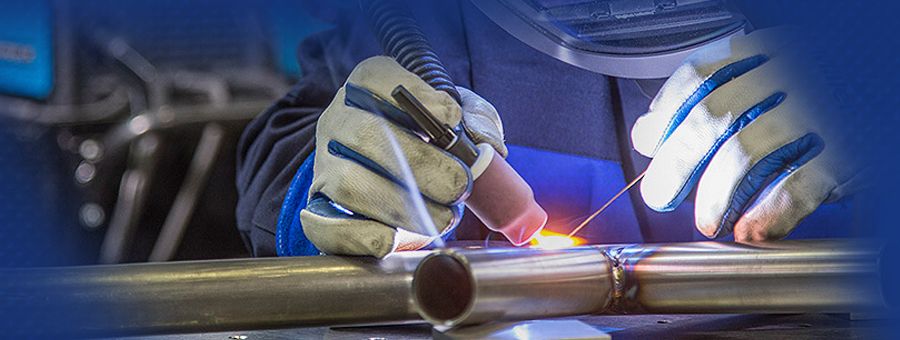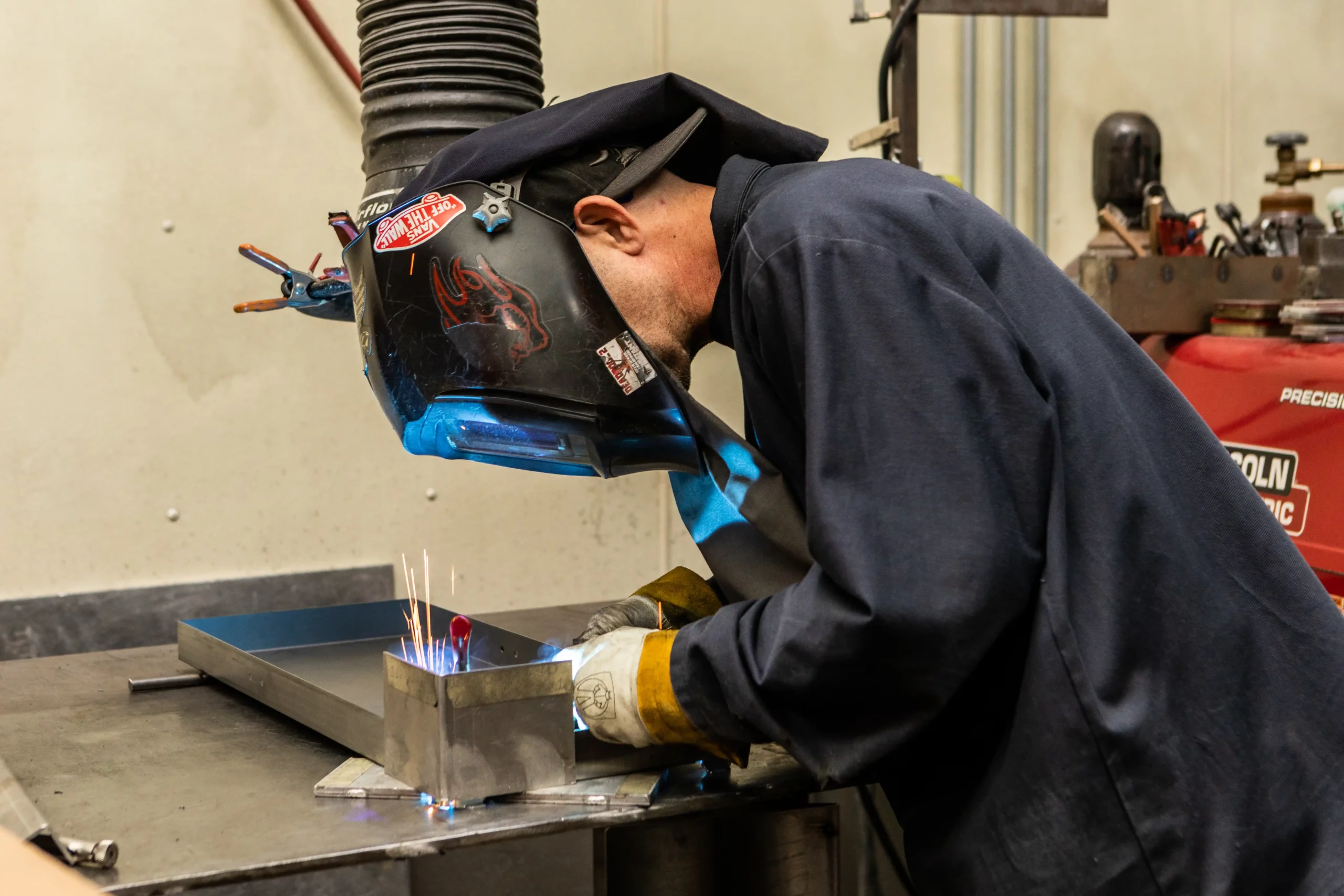Typical Welding Repair Service Issues and Just How to Address Them Efficiently
Welding fixings frequently experience a range of issues that can jeopardize the integrity of the last product. Usual troubles include insufficient penetration, porosity, and imbalance, to name a few. Each problem offers special difficulties that call for specific techniques for resolution. Comprehending these issues is essential for welders intending to boost their results and skills. This discussion will certainly discover these usual welding repair service problems and effective approaches to address them.
Poor Infiltration
Insufficient infiltration takes place when the weld steel falls short to completely fuse with the base product, resulting in weak joints and prospective architectural failures. This problem commonly originates from inadequate warm input, incorrect electrode angle, or incorrect welding speed. Welders may come across poor penetration because of a miscalculation of the needed criteria for a specific product thickness or type. Furthermore, contamination on the base material's surface area can prevent reliable bonding, intensifying the problem. To attend to inadequate penetration, welders need to ensure appropriate settings on their tools and maintain a tidy job surface. Regular examination of welds is suggested to determine any type of shortages early, enabling prompt improvements and the avoidance of compromised architectural integrity in bonded assemblies.
Porosity
Porosity is a typical flaw in welded joints that manifests as tiny gas bubbles trapped within the weld metal. This problem can compromise the honesty of the weld, leading to lowered strength and possible failure under stress and anxiety. Montana Mobile Welding and Repair Fabrication. Porosity generally emerges from contamination, moisture, or incorrect welding techniques, which enable gases to run away into the molten weld swimming pool. To address porosity, welders must assure appropriate surface area prep work, keep a clean workplace, and make use of appropriate welding specifications. In addition, choosing the appropriate filler product and protecting gas can mitigate gas entrapment. Regular inspection and testing of welds can help recognize porosity early, ensuring prompt corrective actions are taken, consequently maintaining the high quality and dependability of the welded structure
Imbalance
Misalignment in welding can develop from different aspects, including incorrect arrangement and thermal development. Understanding the origin causes is important for effective resolution. Numerous improvement techniques are offered to realign elements and guarantee structural integrity.
Root causes of Imbalance
Welding misalignment typically originates from a selection of underlying problems that can jeopardize architectural stability. One primary cause is inappropriate fit-up of elements before welding, which can lead to spaces and irregular surface areas. Variations in thermal development throughout the welding procedure can also cause distortion, especially if the products being joined have different coefficients of growth. Furthermore, poor fixturing and securing may fall short to hold parts firmly in position, leading to activity during welding. Improperly kept equipment, consisting of welding devices and tools, might present incongruities in the weld bead, more adding to misalignment. Operator mistake, stemming from not enough training or experience, can likewise play a substantial role in developing misaligned welds.

Modification Methods Offered
Attending to imbalance efficiently needs a mix of rehabilitative strategies customized to the specific issues at hand. One common approach is the usage of jigs or components to hold components in the proper position throughout welding, making certain consistent placement. Furthermore, pre-heating the materials can aid decrease distortion and enhance fit-up. For significant misalignment, mechanical realignment techniques, such as making use of hydraulic jacks or clamps, can be utilized to remedy the position before welding. Post-weld warm therapy may likewise be required to soothe tensions triggered by imbalance. Finally, mindful inspection and change during the configuration stage can protect against misalignment concerns from coming to be significant troubles, promoting a smoother welding procedure and enhancing general structural integrity.
Distortion
Distortion is a typical challenge in welding that can arise from different factors, consisting of uneven cooling and heating. Recognizing the root causes of distortion is important for applying reliable avoidance methods. Addressing this concern not just improves structural honesty yet likewise boosts the overall quality of the weld.
Root causes of Distortion
When based on the intense warmth of welding, materials often undergo adjustments that can result in distortion. This sensation mostly arises from thermal development and contraction during the welding procedure. As the weld area warms up, the product broadens; upon cooling, it acquires, which can create inner stress and anxieties. Additionally, uneven heating throughout a workpiece can aggravate these anxieties, resulting in warping or bending. The type of material likewise plays a considerable duty; steels with varying thermal conductivity and coefficients of expansion may respond in different ways, bring about unpredictable distortions. In addition, bad view it now joint design and poor fixturing can add to misalignment during welding, raising the probability of distortion. Understanding these reasons is vital for reliable welding repair work and prevention strategies.
Prevention Techniques
Efficient prevention techniques for distortion during welding emphasis on managing heat input and making certain appropriate joint design. Preserving a constant warmth input aids to lessen thermal expansion and contraction, which can result in distortion. Utilizing techniques such as preheating the work surface can additionally decrease the temperature level slope, advertising uniform heating. Furthermore, choosing ideal joint designs, such as T-joints or lap joints, can improve security and lower anxiety focus. Implementing proper fixturing to secure the workpieces in position further aids in next page keeping alignment during the welding process. Finally, staggered welding series can distribute warmth extra uniformly, preventing local distortion. By applying these techniques, welders can greatly lower the possibility of distortion and improve the overall top quality of their welds.
Breaking
Breaking is an usual problem come across in welding repair work, usually resulting from numerous elements such as incorrect air conditioning rates, product selection, or inadequate joint preparation. The occurrence of fractures can considerably endanger the honesty of the weld, bring about prospective failures during operation. To resolve this concern, welders must first examine the origin, making certain that products are compatible and properly chosen for the details application. Additionally, controlling the air conditioning rate during the welding procedure is essential; rapid cooling can induce anxiety and result in cracking. Appropriate joint layout and prep work likewise add to decreasing the threat. Executing these strategies can boost weld top quality and longevity, eventually lowering the likelihood of breaking in finished weldments.

Incomplete Combination
A substantial concern in welding fixings is insufficient blend, which happens when the weld metal does not adequately bond with the base product or previous weld passes - Montana Mobile Welding and Repair Belgrade Fabrication. This flaw can lead to weak points in the joint, possibly jeopardizing the stability of the bonded structure. Variables adding to incomplete blend consist of not enough warm input, incorrect welding strategy, and contamination of the surfaces being signed up with. To address this concern properly, welders ought to guarantee proper pre-weld cleansing and surface prep work, in addition to adjust their welding specifications to attain appropriate penetration and fusion. Regular inspection throughout the welding procedure can welders in my area also help recognize insufficient combination early, allowing for prompt restorative measures to improve the total top quality of the weld
Overheating
While welding fixings can enhance architectural integrity, overheating offers a considerable difficulty that can bring about product deterioration. Extreme warmth during welding can modify the mechanical properties of steels, causing decreased strength, enhanced brittleness, and bending. This phenomenon is specifically vital in high-stress applications where architectural dependability is paramount. Determining overheating can entail visual assessments for discoloration or distortion, as well as monitoring temperature during the welding procedure. To mitigate the risks related to getting too hot, welders need to utilize proper techniques, such as managing heat input, readjusting traveling rate, and making use of suitable filler materials. Additionally, executing pre- and post-weld warmth treatments can help recover material residential or commercial properties and boost the overall high quality of the repair service, making certain long-lasting efficiency and security.
Often Asked Questions
What Are the Usual Signs of a Welding Problem?

How Can I Test My Welds for Top quality?
To examine welds for quality, one can utilize aesthetic evaluations, ultrasonic testing, and radiographic methods. Each strategy ensures structural stability, determines issues, and validates adherence to specified criteria, eventually boosting the dependability of the welded joints.
What Security Preventative Measures Should I Take While Welding?
When welding, one should prioritize safety and security by using ideal personal safety equipment, making certain proper air flow, safeguarding combustible products away, keeping a clean work area, and understanding surroundings to protect against injuries and accidents.
Can I Fix a Weld Without Remodeling the Entire Joint?
Repairing a weld without renovating the entire joint is feasible, depending on the damages (Fabrication). Strategies such as grinding, including filler material, or utilizing a welding procedure can efficiently resolve particular problems while maintaining the surrounding structure
What Equipment Are Important for Reliable Welding Repairs?
Important devices for efficient welding repairs include a welding equipment, wire brush, grinder, protective gear, clamps, and filler materials. Each tool plays an important duty in ensuring quality and security throughout the repair work process. Porosity normally arises from contamination, wetness, or incorrect welding methods, which allow gases to leave into the molten weld pool. Improperly kept devices, including welding equipments and tools, may present variances in the weld bead, additional contributing to misalignment. When subjected to the extreme heat of welding, products usually undergo modifications that can lead to distortion. Splitting is an usual problem encountered in welding repair work, usually resulting from various variables such as improper air conditioning prices, product choice, or insufficient joint prep work. A considerable problem in welding repairs is insufficient blend, which takes place when the weld steel does not sufficiently bond with the base material or previous weld passes.